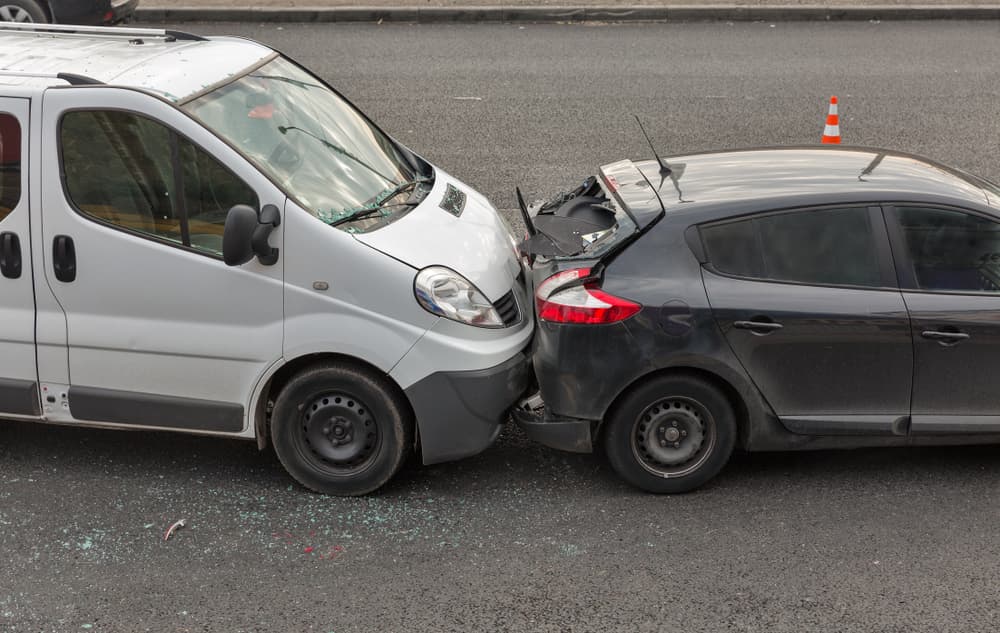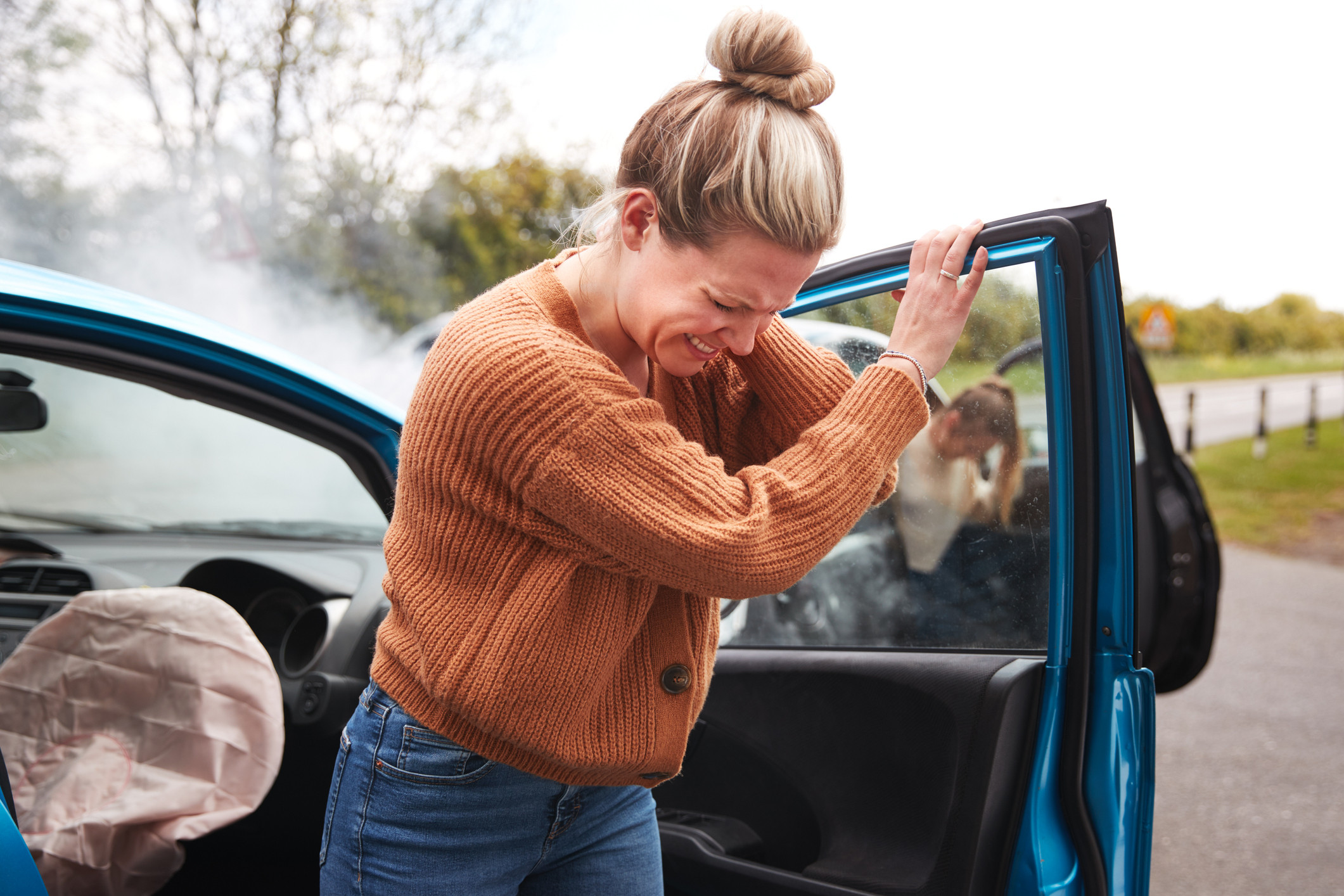Who Is at Fault in a Rear-End Accident?
Who Is at Fault in a Rear-End Accident?
Automobile accidents are unfortunate incidents that can affect anyone at any given moment.
Rear-end collisions stand out as one of the most frequent types of accidents. Their prevalence does not diminish their potential severity. These accidents can result in significant injuries and, in some cases, even fatalities. To navigate the complexities of such situations and ensure maximum compensation, a seasoned Irvine car accident attorney’s representation is essential.
Schedule a Free Initial Consultation
Causes and Factors Contributing to Rear-End Collisions

Rear-end accidents arise from various causes and contributing factors, often involving a combination of reckless driving behavior and external elements.
The following factors contribute to these potentially serious accidents:
- Tailgating: Tailgating occurs when one driver closely follows another vehicle, significantly reducing reaction time. If the vehicle being followed slows down or stops abruptly, the tailgating driver may not stop in time and cause a collision.
- Distracted driving: Any activity taking a driver’s attention from the road can lead to a failure to stop in time to avoid rear-ending another vehicle. Common distractions include cell phone use, radio adjustments, and eating or drinking while driving.
- Disregarding traffic laws: Speeding is a prevalent issue linked to rear-end collisions. If a driver exceeds the speed limit, they may find it challenging to bring their vehicle to a halt in time to avoid colliding with another vehicle.
- Adverse weather conditions: Heavy rain, snowfall, or icy roads can impede a driver’s ability to stop in time. Such conditions may lead to losing control over the vehicle, resulting in a high-speed collision with another car. Drivers are responsible for adjusting their driving to current weather conditions, such as reducing speed in the presence of snow and ice.
- Car defects: Vehicle malfunctions, particularly in the braking system, can lead to a rear-end collision. A faulty braking system may render a driver unable to decelerate and stop.
- Driver error: Occasional driver errors, such as witnessing an unrelated accident causing panic and loss of vehicle control or a driver’s foot slipping and inadvertently pressing the gas pedal instead of the brakes, can result in collisions from behind.
Recognizing these contributing factors is crucial in understanding the dynamics behind rear-end accidents. Legal professionals specializing in car accidents can provide invaluable guidance in navigating such incidents, including launching an investigation into how the accident happened and who might be at fault.
Types of Rear-End Collisions
A rear-end accident occurs when a trailing vehicle fails to stop in time, resulting in a collision with the vehicle ahead. The National Highway Traffic Safety Administration (NHTSA) notes these are the most prevalent motor vehicle accidents.
Shockingly, one occurs approximately every eight seconds in the United States, equating to a staggering 2.5 million rear-end accidents annually.
These accidents can happen in various ways, each presenting a unique potential for severity:
Low-Speed Impact
This occurs when the rear driver gently collides with the back of the front driver’s vehicle at a relatively slow speed. Despite its seemingly minor nature, even low-speed impacts can lead to substantial injury and property damage.
Stopped Vehicle Collision
In this scenario, the rear driver, traveling at a moderate or high speed, collides with the stationary vehicle of the front driver. Such collisions often result in more significant damage and injuries due to the differing velocities.
High-Speed Rear-End Collision
When the rear driver moves faster than the front driver and crashes into the front vehicle, both vehicles may be in motion. These collisions tend to be the most severe, often causing extensive damage and severe injuries.
In certain situations, attributing fault to the driver who rear-ends another car may not be automatic. Although the general rule places responsibility on the rear driver for maintaining a safe following distance, certain circumstances can alter this liability, potentially placing it on the driver of the front car.
Understanding Fault in Rear-End Accidents: Exceptions and Legal Considerations
While rear-end accidents typically attribute fault to the driver in the rear, there are situations where this assumption may not hold true.
Here are instances where the rear driver may not bear primary fault:
- Non-functioning brake lights: If the vehicle in front has malfunctioning brake lights, rendering it unable to signal an impending stop, the rear driver might not bear sole responsibility for the collision.
- Abrupt deceleration without turning: The rear driver may not be at fault if the front vehicle abruptly slows down in anticipation of a turn but decides against completing the maneuver. This scenario depends on the sudden change in speed without a corresponding turn indication.
- Reversing into traffic: In cases where a vehicle reverses into oncoming traffic, causing a collision with the rear driver, the responsibility for the accident may not lie primarily with the driver struck from behind.
- Failure to address a flat tire: When a vehicle experiences a flat tire and fails to take appropriate measures, such as pulling off the road or activating hazard flashers, a subsequent rear-end collision may not solely be the rear driver’s fault.
- Brake checking: Drivers who purposely hit the brakes on the highway to intimidate a tailgating driver can be at least partially liable for a resulting collision.
These exceptions depend on specific circumstances and may vary based on local traffic laws and regulations. Each case is unique, requiring a careful examination of the incident’s details.
Regardless of the circumstances surrounding a rear-end accident, seeking the guidance of an experienced car accident attorney is imperative. They can help determine liability, consider local laws, and hold the responsible party accountable for your damages.
Additionally, a seasoned car accident attorney can navigate the legal complexities surrounding rear-end accidents to ensure a fair resolution for your case.
Dealing with Insurance Adjusters
Insurance adjusters often dispute injury claims arising from no-damage or low-impact rear-end accidents. In such cases, having an experienced car accident attorney can be invaluable. They can seek fair compensation for injuries, lost income, and pain and suffering, significantly enhancing your financial recovery.
Injuries Resulting from Rear-End Collisions
Even seemingly minor rear-end collisions can lead to delayed-onset and severe injuries, highlighting the importance of seeking immediate medical attention after an accident.
Not only does this prioritize your health, it also establishes a clear link between the accident and any subsequent injuries diagnosed. Failing to seek medical care promptly can be used to the advantage of the at-fault party, potentially weakening your claim for damages.
While rear-end collisions can result in a range of injuries, some of the most common affect critical areas such as the neck, back, head, brain, and spinal cord:

- Whiplash: Whiplash occurs due to the neck’s sudden, forceful back-and-forth movement. It affects the soft tissues in the neck, such as the muscles and cartilage. While some cases resolve with medication and treatment, others can lead to chronic pain or restricted neck mobility.
- Back injuries: Back injuries happen frequently in rear-end collisions. The impact of a rear-end crash can result in compression of the spine or discs, severe bruising of back muscles, and significant pain, altering everyday activities.
- Head and brain injuries: Abrupt forward thrusts from a rear-end accident may lead to contact with surfaces inside the vehicle, resulting in lacerations, bruising, and other forms of disfigurement. Traumatic brain injuries (TBI), such as concussions, can lead to cognitive impairments and physical limitations.
- Spinal cord injuries (SCI): Rear-end collisions can cause spinal cord injuries, leading to partial or total paralysis and impacting mobility and quality of life.
Other Serious Injuries
- Facial injuries: Impacts can cause cuts, bruises, fractures, and damage to facial features.
- Chest injuries: Force can result in contusions, broken ribs, or damage to internal organs.
- Pelvic and abdominal injuries: Trauma may cause fractures or damage to internal organs.
- Knee and leg injuries: Legs forced against structures can cause fractures, dislocations, or soft tissue injuries.
- Internal injuries: Damage to internal organs may not be immediately visible and requires prompt medical attention.
- Fractures and dislocations: Force can cause bones to break or joints to become dislocated.
- Nerve damage: Trauma can lead to pain, numbness, or loss of sensation in affected areas.
- Airbag injuries: Deployment can cause burns, abrasions, or more severe injuries.
- Psychological trauma: Emotional trauma, including anxiety, depression, or PTSD, may result.
Given the potential long-term consequences of many of these injuries, seeking immediate medical attention is crucial. Consulting a car accident lawyer further protects your legal rights. It ensures fair compensation for injuries and damages, considering the full extent of injuries may not always be immediately apparent.
What About Rear-End Accidents Without Visible Vehicle Damage?
Injuries resulting from rear-end collisions can range from minor to catastrophic. Even at low speeds with little or no damage to the vehicles, victims may suffer severe harm, including fractures, whiplash, neck injuries, or spinal cord damage.
In situations with no apparent or minor damage to the involved vehicles, reporting the accident to local law enforcement remains essential. While authorities may not respond to minor incidents in busy areas, documenting the call creates a record for future reference.
Collect evidence, even if you initially decide against filing a claim. This proactive approach ensures you have information available should the need arise.
You should also note that injuries from seemingly low-impact collisions can be significant, possibly manifesting symptoms days after the incident. Whether you were the driver or passenger in the rear-ended vehicle, seeking prompt medical attention is imperative.
Additionally, always have your vehicle thoroughly inspected for damages. A superficial examination might suggest no visible harm, but there might be underlying issues like a bent frame or misalignment.
How an Attorney Can Assist After a Rear-End Collision
Seeking the assistance of a skilled lawyer following a rear-end accident can prove invaluable. Here’s how a lawyer can provide comprehensive support:
Determining Liability
Establishing fault in a rear-end collision may seem apparent, but complexities can arise. A seasoned attorney will thoroughly investigate factors such as non-functioning brake lights, sudden deceleration without executing a turn, reversing into traffic, or a failure to address a flat tire. This careful examination ensures that the responsible party is accurately identified and held accountable.
Navigating Legal Processes
The aftermath of an accident can be overwhelming, especially if you’re dealing with injuries. A lawyer guides you through the legal proceedings, ensuring you meet crucial deadlines, gather necessary evidence, and accurately file paperwork. They clarify the complexities of liability and advise on the best course of action tailored to your specific case.
Negotiating with Insurance Companies
Dealing with insurance companies can be daunting. Lawyers leverage their negotiation skills and legal experience to interact with insurers, aiming to secure the maximum compensation for your damages.
This includes thorough documentation and presentation of medical expenses, property damage, lost income, and other relevant factors to build a compelling case for fair compensation.
Preparing for Litigation
A lawyer will be ready to take your case to court if they do not receive a fair settlement offer through negotiation. They carefully prepare for litigation by gathering additional evidence, consulting expert witnesses, and developing a strong legal strategy.
Throughout the court proceedings, they advocate on your behalf to ensure your rights are protected and that you receive the compensation you deserve.
Protecting Your Rights
Insurance companies may attempt to shift blame or downplay the extent of your injuries.
A lawyer acts as a vigilant advocate, protecting your rights and ensuring insurance companies do not take advantage of you during the claims process. They counter any efforts to diminish your case’s value and work tirelessly to secure a fair outcome based on the true extent of your damages.
Were You Recently Injured in a Rear-End Collision? Reach Out to an Experienced Car Accident Attorney Today

Greg Bentley & Keith More, Rear-End Car Accident Attorney
Hiring a knowledgeable car accident attorney, proficient in local traffic laws and regulations, provides valuable insights and assistance in understanding the complexities of liability associated with rear-end accidents.
Such legal professionals can guide you through the legal process, safeguard the rights and interests of all involved parties, and provide support in seeking a resolution. If you were recently in a rear-end accident, don’t delay—schedule a consultation with a personal injury lawyer in Irvine at your earliest convenience.


